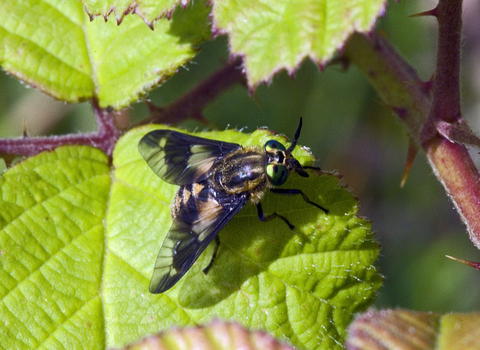
Twin-lobed Deer-fly ©Les Binns
Twin-lobed deer-fly
Many of us have felt the painful bite of the Twin-lobed deer-fly (a 'horse-fly') while out walking in damp grasses or woods. But mostly, it prefers to feed on the blood of cows and ponies, often becoming a pest.
Scientific name
Chrysops relictusWhen to see
May to SeptemberSpecies information
Category
Statistics
Length: 1cmCommon.
